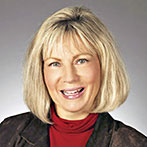All You Still Need to Know About RFPs but Were Afraid to AskJanuary 1, 2014
By Terry Matthews-Lombardo, CMPAll You Still Need to Know About RFPs but Were Afraid to Ask

 Terry Matthews-Lombardo, CMP, is a case study in industry longevity, having held jobs on both the supplier and planner sides since graduating “a very long time ago” with a degree in hotel management. Terry has learned a lot during a lifetime of planning meetings and events in more than 40 countries around the globe, and says that contrary to popular opinion you mostly really do sweat the small stuff in this industry. Working out of Orlando, FL, as an independent trip director, meeting manager and freelance industry writer, she continues to attempt to solve world problems (or at least industry challenges) from one hotel lobby bar to the next. She can be reached at TML Services at tml@cfl.rr.com.
Terry Matthews-Lombardo, CMP, is a case study in industry longevity, having held jobs on both the supplier and planner sides since graduating “a very long time ago” with a degree in hotel management. Terry has learned a lot during a lifetime of planning meetings and events in more than 40 countries around the globe, and says that contrary to popular opinion you mostly really do sweat the small stuff in this industry. Working out of Orlando, FL, as an independent trip director, meeting manager and freelance industry writer, she continues to attempt to solve world problems (or at least industry challenges) from one hotel lobby bar to the next. She can be reached at TML Services at tml@cfl.rr.com.
So, you think this topic has already been beaten to death? Well, think again because I’m here to tell you that both planners and suppliers have more to learn on this subject!
A few months ago, I participated as a panelist on a SPIN (Senior Planners Industry Network, www.spinplanners.com) webinar covering this very theme, and even I had some aha! moments (Did I mention before that I’ve got — ahem — 30+ years in this industry? Well there now, I’ve said it).
We mostly (sadly) learned that there are still many planners out there who need some education, or at least a refresher course, as to some important points in the RFP process, and also that suppliers could learn a thing or two by listening (maybe they should be asking us?) to what we want to see coming back from them. Here are some highlights from this panel discussion.
Advice for Planners — From Suppliers
Narrow your search. And stop sending RFPs to 100 properties, when you’re pretty certain that only five will qualify. In other words, do your homework first. This applies even when you’re using a search engine to do the sending. Hotels tell us they are inundated with RFPs, many of which don’t even fit their properties to begin with, so why are you sending it out to so many?










